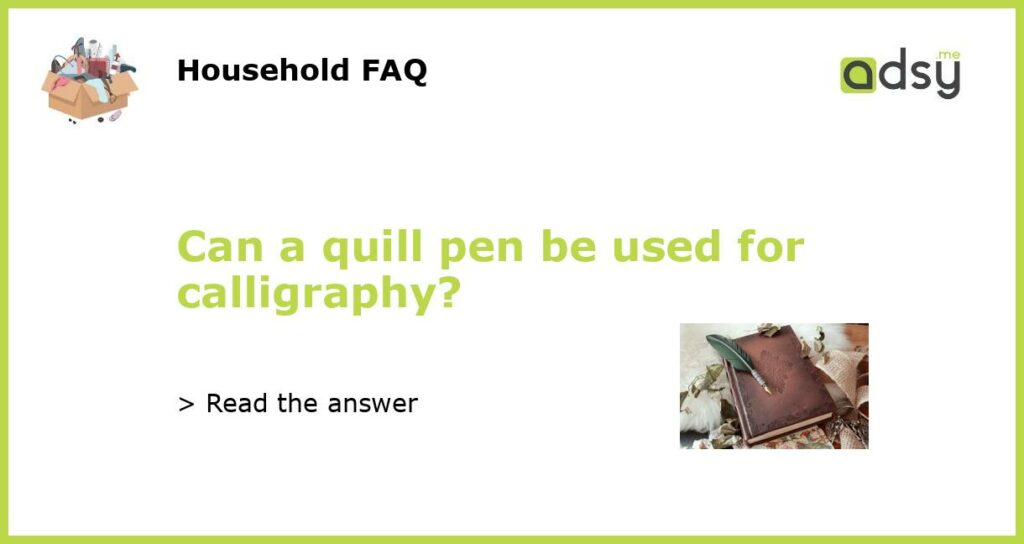Yes, a quill pen can be used for calligraphy
Calligraphy is an art form that involves creating beautiful and decorative lettering using a variety of tools and writing instruments. While modern calligraphers often use specialized pens and markers, a traditional quill pen can also be used to create stunning calligraphy. In fact, using a quill pen can add a unique and vintage feel to your calligraphy work. In this article, we will explore the history of quill pens, their advantages and disadvantages for calligraphy, and some tips on how to use them effectively.
The History of Quill Pens
Quill pens have a long and rich history dating back to ancient times. They were commonly used for writing and drawing before the invention of the metal dip pen in the 19th century. Quill pens were made from the flight feathers of large birds like geese and swans. The feathers were carefully harvested, hardened, and then shaped into a tip for writing. These pens were widely used by scribes, scholars, and artists throughout the Middle Ages and Renaissance periods. They continued to be used even after the introduction of metal pens and fountain pens, thanks to their flexibility and unique writing qualities.
The Advantages of Using a Quill Pen for Calligraphy
One of the main advantages of using a quill pen for calligraphy is the flexibility and control it offers. The softness of the feather allows for variations in line widths and the ability to create thin and thick strokes with ease. This flexibility is especially useful for creating ornate lettering and decorative flourishes in calligraphy. Additionally, quill pens are relatively inexpensive compared to other calligraphy tools, making them accessible to beginners and those on a budget. They also provide a nostalgic and traditional feel to your calligraphy work, which can be appealing to many artists and enthusiasts.
The Disadvantages of Using a Quill Pen for Calligraphy
While quill pens have many advantages for calligraphy, they also have some limitations. One of the main challenges with using a quill pen is the need for regular maintenance and care. The tips of quill pens can wear out or become clogged with ink, requiring frequent cleaning and trimming to maintain their optimal performance. Additionally, quill pens can be more delicate and prone to damage compared to modern calligraphy pens. The natural materials used in their construction make them susceptible to moisture and temperature changes. However, with proper care and attention, these issues can be mitigated.
Tips for Using a Quill Pen Effectively
To get the best results from a quill pen for calligraphy, here are some tips to keep in mind:
- Choose the right feather: Different feathers will have varying flexibility and writing qualities. Experiment with different types of feathers to find one that suits your calligraphy style.
- Prepare the pen: Trim the quill pen’s tip to your desired shape using a sharp knife or scissors. This will allow you to control the width of your strokes.
- Keep it clean: Regularly clean your quill pen by rinsing it with water or wiping it with a damp cloth. This will prevent the ink from drying and clogging the tip.
- Practice pressure control: Quill pens require a delicate touch. Practice applying varying degrees of pressure to achieve different line thicknesses.
- Experiment with different inks: Quill pens can work with a variety of inks, including traditional calligraphy inks and even watercolors. Try different options to find the one that suits your style and preferences.
While modern calligraphy tools have become popular among artists and enthusiasts, a quill pen can still be a charming and effective choice for creating beautiful calligraphy. Its flexibility, control, and vintage feel make it worth exploring for calligraphers of all levels. With proper care and practice, a quill pen can help you achieve stunning and unique calligraphy works.






